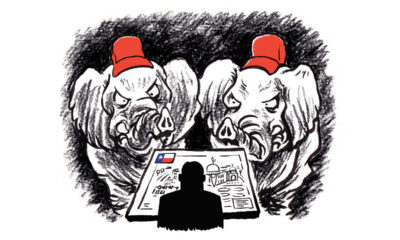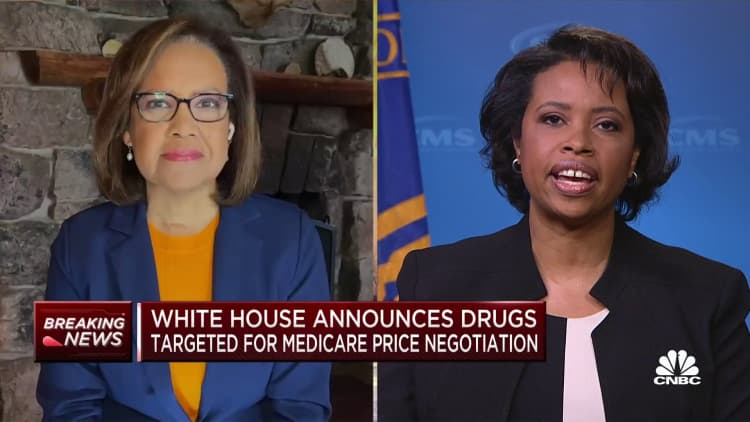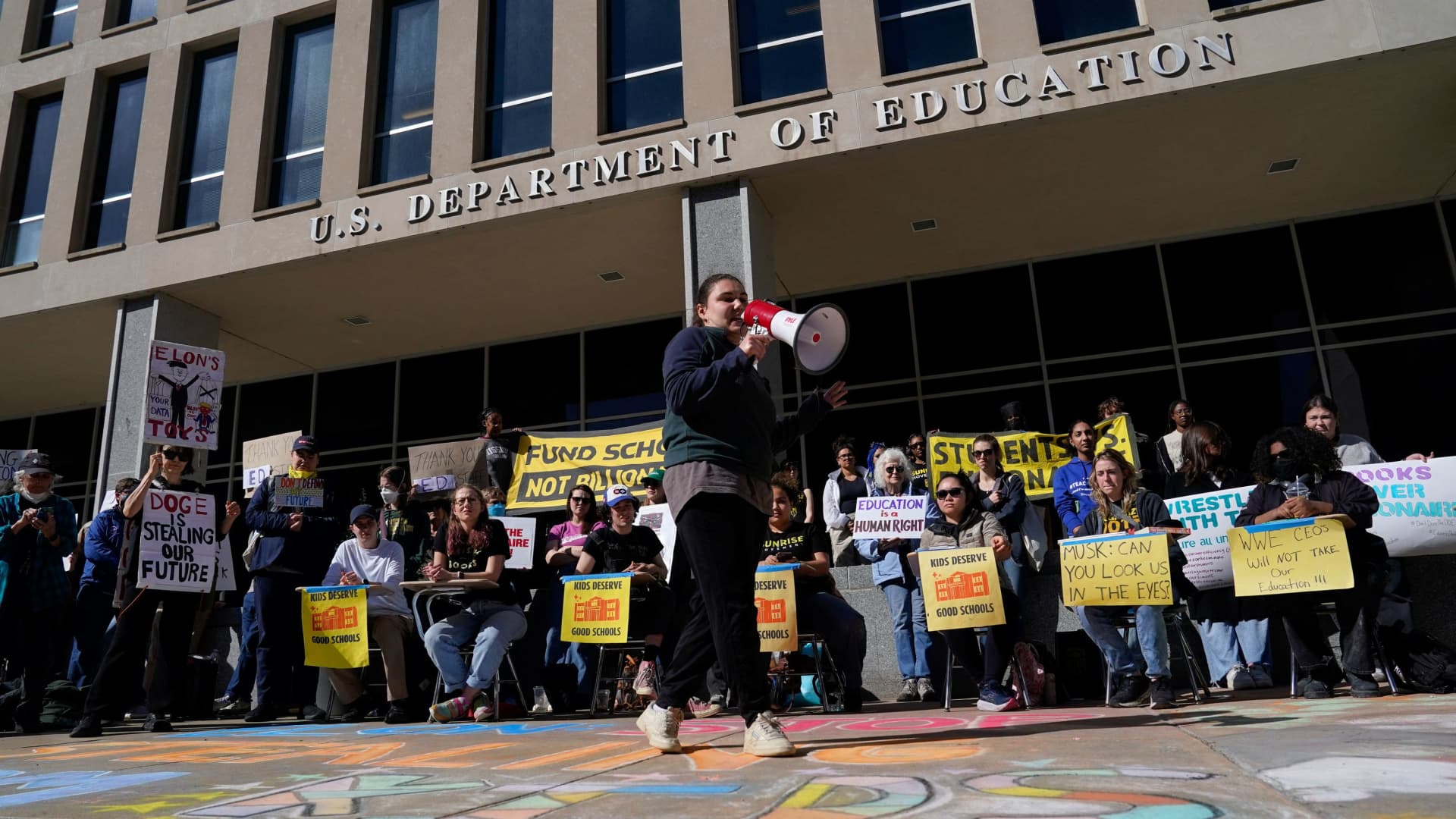U.S. President-elect Donald Trump arrives on November 13, 2024 at Joint Base Andrews, Maryland.
Andrew Harnik | Getty Images
President-elect Donald Trump‘s return to the White House is poised to have big impacts on consumer health care.
Republicans may face few legislative roadblocks with their goals of reshaping health insurance in the U.S., experts said, after the party retained its slim majority in the House of Representatives and flipped the Senate, giving it control of both Congress and the presidency.
Households that get health insurance from Medicaid or an Affordable Care Act marketplace plan may see some of the biggest disruptions, due to reforms sought by Trump and Republican lawmakers, according to health policy experts.
Such reforms would free up federal funds that could be used to help pay for other Republican policy priorities like tax cuts, they said.
Just under 8% of the U.S. population is uninsured right now — the lowest rate in American history, said Michael Sparer, a professor at Columbia University and chair of its Department of Health Policy and Management. That figure was 17% when the Affordable Care Act was enacted over a decade ago, he said.
“That rate will start going up again,” Sparer said.
Trump announced on Nov. 14 that he wants to tap Robert F. Kennedy Jr. to run the Department of Health and Human Services, which includes the Centers for Medicare and Medicaid Services. CMS, in turn, administers the Affordable Care Act marketplace and the Children’s Health Insurance Program (CHIP), among other endeavors.
Robert F. Kennedy Jr. speaks with Republican presidential nominee former President Donald Trump at a Turning Point Action Rally in Duluth, GA on Wednesday, Oct. 23, 2024.
The Washington Post | The Washington Post | Getty Images
Kennedy, a vaccine skeptic who’s been accused of spreading conspiracy theories, has vowed to make big changes to the U.S. health care system.
A spokesperson for Trump’s transition team did not respond to a request from CNBC for comment about the President-elect’s health policy plans.
Here’s how health care could change for consumers during the incoming Trump administration, according to experts.
Affordable Care Act marketplace
A lab technician cares for a patient at Providence St. Mary Medical Center on March 11, 2022 in Apple Valley, California.
Mario Tama | Getty Images News | Getty Images
‘Betting’ premium subsidies will expire
Based on how the election went, the enhanced subsidies on the Affordable Care Act will likely not be renewed once they expire at the end of 2025, said Cynthia Cox, vice president and director of the ACA program at KFF, a health policy research organization.
“If I was going to place a bet on this, I’d be much more comfortable betting that they are going to expire,” Cox said.
More from Personal Finance:
What Trump’s tariff plan may mean for your wallet
What a Trump presidency could mean for your taxes
What Trump could mean for the housing market
That government-backed aid, originally passed during the pandemic under the American Rescue Plan in 2021, has significantly lowered the costs of coverage for people buying health insurance plans on the ACA marketplace. Those customers include anyone who doesn’t have access to a workplace plan, such as students, self-employed consumers and unemployed people, among others.
An individual earning $60,000 a year now has a monthly premium of $425, compared to $539 before the enhanced subsidies, according to a rough estimate provided by Cox. Meanwhile, a family of four making about $120,000 currently pays $850 a month instead of $1,649.
Permanently extending the enhanced ACA subsidies could cost around $335 billion over the next 10 years, according to an estimate by the Congressional Budget Office.
“They’re concerned about the cost, and they’re going to be cutting taxes next year likely,” Cox said, of Republicans.
Still, it’s a ‘big’ gamble to forgo health insurance
Around 3.8 million people will lose their health insurance if the subsidies expire, the Congressional Budget Office estimates. Those who maintain their coverage are likely to pay higher premiums.
“The bottom line is uncertainty,” said Sabrina Corlette, co-director of the Center on Health Insurance Reforms at Georgetown University’s McCourt School of Public Policy.
“The good news for marketplace consumers is that the enhanced [subsidies] will be available through 2025, so there should be no immediate changes,” Corlette added.
Even if the subsidies disappear, experts say it’s important to stay enrolled if you can, even if you have to make tradeoffs on coverage to keep the costs within budget.
Enrolling in a plan, even a cheaper plan with a big annual deductible, can provide an important hedge against huge costs from unforeseen medical needs like surgery, said Carolyn McClanahan, a physician and certified financial planner based in Jacksonville, Florida.
“I can’t emphasize how big a gamble it is to go without health insurance,” said McClanahan, founder of Life Planning Partners and a member of the CNBC Financial Advisor Council.
“One heart attack easily costs $100,000” out of pocket for someone without insurance, she said. “Do you have that to pay?”
Medicaid
A ‘pretty big target’ for lawmakers
Medicaid is the third-largest program in the federal budget, accounting for $616 billion of spending in 2023, according to the Congressional Budget Office. Trump campaigned on a promise not to make cuts to the two largest programs: Social Security and Medicare.
That makes Medicaid the “obvious place” for Republicans to raise revenue to finance their agenda, said Larry Levitt, executive vice president for health policy at KFF.
“Medicaid will have a pretty big target on its back,” Levitt said.
The bottom line is uncertainty.
Sabrina Corlette
co-director of the Center on Health Insurance Reforms at Georgetown University’s McCourt School of Public Policy
Cuts would “inevitably mean” fewer households would get benefits, Levitt said. Medicaid recipients tend to be lower-income households, people with disabilities and seniors in nursing homes, he said.
Medicaid cuts were a big part of the push among Trump and other Republican lawmakers to repeal and replace the Affordable Care Act (also known as Obamacare) in 2017, Levitt said.
Those efforts were ultimately unsuccessful.
How Medicaid might be curtailed
Maskot | Maskot | Getty Images
The new Medicaid cuts may take many forms, according to experts, who cite past proposals and remarks from the Trump administration, Republican lawmakers and the Project 2025 conservative policy blueprint.
For example, the Trump administration may try to add work requirements for Medicaid recipients, as it did during his first term, said Sparer of Columbia University.
Additionally, Republicans may try to cap federal Medicaid spending allocated to states, experts said.
The federal government matches a portion — generally 50% or more — of states’ Medicaid spending. That dollar sum is uncapped.
Republicans may try to covert Medicaid to a block grant, whereby a fixed amount of money is provided annually to each state, or institute a per-capita cap, whereby benefits are limited for each Medicaid enrollee, Levitt said.
Lawmakers may also try to roll back the Medicaid expansion under the Affordable Care Act, which broadened the pool of people who qualify for coverage, experts said.
They could do this by cutting federal financing to the 40 states (plus the District of Columbia) that have expanded Medicaid eligibility. That would shift “an enormous financial risk to states, and many states as a result would drop the Medicaid expansion,” Levitt said.
Short-term health insurance plans
Under the previous Trump administration, consumers saw an increase in the availability of non-ACA compliant health insurance options, including short-term plans, experts say. The same is likely to happen over the next four years.
Short-term health insurance plans offer coverage for limited amounts of time, and typically on fewer medical services than comprehensive coverage.
Proponents of these plans say they allow insurers to offer consumers lower monthly premiums because they’re not required to cover as many services. At the same time, the plans are able to reject people with pre-existing conditions or charge them more. While Trump was in office, enrollment in short-term plans spiked.
The U.S. Capitol building in Washington, D.C., Oct. 4, 2023.
Yasin Ozturk | Anadolu Agency | Getty Images
“The previous Trump administration and many in the GOP have called for expanding the marketing and sale of short-term plans and other insurance products that do not have to satisfy the ACA’s pre-existing condition standards and other consumer protections,” said Georgetown University’s Corlette.
She said that consumers can be attracted to the plans for their low costs, but often learn too late how thin the coverage is.
Drug prices
The Trump administration’s stance on drug pricing is murkier, health experts said.
The Inflation Reduction Act, which President Biden signed into law in 2022, introduced many drug price reforms.
Trump has vowed to roll back parts of the law, which also contains many climate-related provisions and tax breaks toward which he is hostile.
It’s unclear if lawmakers would keep the drug policies intact, experts said. Trump signed executive orders in 2020 aimed at lowering costs for prescription medications, for example.
“It’s not at all clear Trump will be a friend of the pharma industry,” Sparer said.
For example, the Inflation Reduction Act gave the federal government — for the first time — the authority to negotiate prices with pharmaceutical companies over some drugs covered by Medicare.
That provision is slated to kick in for 10 drugs — some of Medicare’s “most costly and most used” medications, treating a variety of ailments like heart disease, diabetes, arthritis and cancer — in 2026, according to the Centers for Medicare and Medicaid Services.
The measure will save patients $1.5 billion in out-of-pocket costs in 2026, CMS estimates. The federal government would expand the list of medications in ensuing years.
The Inflation Reduction Act also capped Medicare co-pays for insulin at $35 a month. They were previously uncapped. The average Medicare Part D insulin user had paid $54 out-of-pocket a month per insulin prescription in 2020, according to KFF.
The law also capped out-of-pocket costs at $2,000 a year for prescription drugs covered by Medicare, starting in 2025. There was previously no cap.
About 1.4 million Medicare Part D enrollees paid more than $2,000 out-of-pocket for medications in 2020, KFF found. Those costs averaged $3,355 a person.


 Blog Post1 week ago
Blog Post1 week ago
 Economics1 week ago
Economics1 week ago
 Finance1 week ago
Finance1 week ago
 Economics1 week ago
Economics1 week ago
 Economics1 week ago
Economics1 week ago
 Personal Finance1 week ago
Personal Finance1 week ago
 Accounting1 week ago
Accounting1 week ago
 Economics1 week ago
Economics1 week ago













